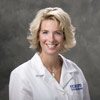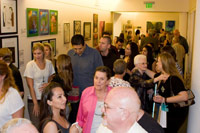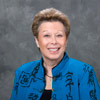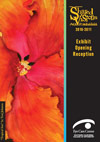
|
The school features the work of low vision and legally blind artists from around the world as part of its “Shared Visions” (http://www.sccoeyecare.com/news.html ) project for the past six years. The most recent installment of the exhibition is set to open on Sept. 21.
 |
|
| REBECCA KAMMER |
|
|
|

|
|
|
Guests packed the Eye Care Center during last year’s opening reception. |
“As optometrists, we are trained about vision and how it’s connected to the brain. When you look at vision and art, it’s physical but it’s about the mind’s eye, too,” Kammer explained. “Quite a bit of what our artists do is more about holistic vision. Even if they don’t have great sight anatomically, they have excellent vision as artists. It’s about the whole person,” she added.

|
|
| ARLENE KAYE |
|
|
|

|
|
|
The invitation for this year’s “Shared Visions Exhibit” features “Tropical Sun” by artist Toni Johnson. |
Once submissions have been received, in June, a panel of four art professors along with the art director from the Braille Institute of America (http://brailleinstitute.org/) evaluate the art and pick the 90 top-scoring pieces—what Kaye said is usually half of the entries. During this time, the previous year’s show is taken down and the current exhibit is installed along the walls of the Eye Care Center, where it will remain for just under 11 months.
“It’s really an inspiring night and it really emphasizes the abilities of these folks,” Kaye said, adding that last year’s reception had almost 500 attendees. For the show’s opening night, artists, patients, sponsors and guests tour the new exhibit, discussing the art and making purchases. Kaye said that around 80 percent of the show’s sales happen on opening night. Though some artists choose not to sell their artwork, Kaye said all proceeds from those pieces sold go directly to the respective artists. New this year, the exhibit is building an audio version of the informative art tags for legally blind visitors using the Pen Friend recorder.
“We help patients with permanent vision loss who also need help living life and regaining independence. The exhibit is really highlighting upon the beauty of life and expanding on their possibilities,” Kammer said. “We’re not seeing the patient as disabled but rather, focusing on their talents. Everyone who comes out is much more enriched than they expected.” ■ ■











